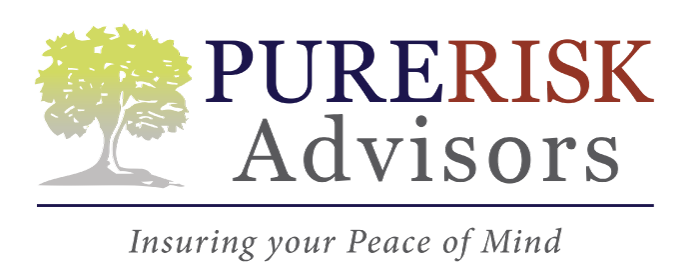Colorado Employee Wellness Program
See How We're Different
or call us: 303-834-1001
If you run a business in Colorado, you already know how hard it is to balance employee benefits with rising costs. Health insurance premiums go up every year, payroll taxes keep climbing, and finding ways to add value for your team without cutting into profits can feel impossible.
That’s where employee wellness programs come in. Not the typical step-counting or fitness-app challenges, but ACA-compliant wellness programs that create real tax savings for employers while giving employees better access to care.
One of the most effective options available to Colorado employers right now is the TruBenefit Preventative Care Management Program (PCMP) — a structured wellness plan designed to lower payroll taxes, improve employee retention, and promote long-term health outcomes.
What the TruBenefit Program Actually Is
TruBenefit is an ACA-qualified, ERISA-approved wellness and reimbursement program. It’s built around the concept of a Self-Insured Medical Reimbursement Plan (SIMRP) and a Section 125 Cafeteria Plan, both recognized by the IRS.
Here’s how it works:
- Each employee is given a monthly wellness allowance that’s funded through pre-tax dollars.
- Those funds are used to access preventative care benefits such as telehealth, chronic care management, and mental health support through partners like Amaze Health and LifeSpeak.
- Because the benefit is pre-taxed, employers save roughly $500–$600 per employee per year in payroll taxes, and employees lower their taxable income without losing take-home pay.
It’s a compliance-driven, federally recognized model — not a gimmick. TruBenefit meets the IRS guidelines under Sections 105, 106, 125, and 213(d) and falls within the participatory wellness category of the Affordable Care Act.
Why Colorado Employers Are Paying Attention
Colorado’s small and mid-sized businesses face some unique challenges. The cost of living is high, competition for good talent is intense, and many employers can’t afford full-scale health benefits for every worker.
The TruBenefit model gives employers a new option — one that’s compliant, scalable, and immediately beneficial. Here’s what makes it stand out:
- Lower Payroll Taxes: By pre-taxing the wellness contribution, employers save on FICA taxes.
- Happier Teams: Employees gain access to virtual healthcare, mental health support, and preventative resources at no out-of-pocket cost.
- Zero Net Cost: Because the program re-allocates existing payroll tax dollars, most businesses see no change in overall expense.
- Better Retention: Employees feel cared for, which reduces turnover and improves morale.
For many Colorado employers, it’s the first wellness program that feels financially sustainable.
How the Process Works
Setting up TruBenefit follows a simple, repeatable process handled mostly between the agent and the TruBenefit team.
Step 1: Schedule the Presentation
An agent or advisor introduces the program through a live presentation with the TruBenefit team.
Step 2: Complete the Census Template
The employer provides a list of employees and payroll details to estimate the tax savings and wellness allowance per person.
Step 3: Set Up the Account
The employer completes the new account form, and TruBenefit sends a proposal showing the expected FICA savings and employee benefits.
Step 4: Review & Sign the Plan Documents
All legal plan documents (Section 125, SIMRP, PCMP) are prepared and signed via DocuSign.
Step 5: Enrollment
Employees review their individual paycheck reports and select any optional supplemental benefits, such as short-term disability or accident insurance.
Step 6: Payroll Setup
TruBenefit works directly with the employer’s payroll provider to implement the deductions and finalize compliance.
Step 7: Employee Access
Each participating employee receives access to the TruBenefit portal, the Amaze telehealth platform, and LifeSpeak’s mental health resources.
Within two weeks, the business begins saving money on payroll taxes, and employees gain meaningful new benefits without reducing take-home pay.
Benefits Included in a Typical Program
TruBenefit’s wellness platform integrates with leading virtual health and wellbeing services.
| Program Feature | What Employees Get | Employer Value |
|---|---|---|
| Amaze Health Telemedicine | 24/7 access to virtual urgent care, primary care, and mental health professionals | Keeps employees healthy and reduces absenteeism |
| LifeSpeak Mental Wellness Platform | On-demand videos, counseling resources, and resilience training | Builds a culture of mental health awareness |
| Preventative Health Dashboard | Health Risk Assessment (HRA) and personal wellness tracking | Encourages engagement and compliance |
| Supplemental Insurance Options | Voluntary life, accident, or disability coverage | Creates additional revenue opportunities for agencies |
| Compliance & Reporting | Section 125, 105, and ACA documentation handled by TruBenefit | Protects employers from IRS or ACA violations |
How the Tax Savings Add Up
Let’s look at an example.
A Colorado construction firm with 50 full-time employees enrolls in TruBenefit.
Each employee receives a $1,200 annual wellness benefit funded pre-tax.
- Employer FICA savings: roughly $30,000–$35,000 per year
- Employee payroll tax savings: roughly $20,000–$25,000 combined
- Net effect: improved employee benefits and morale with no increase in company expenses
That’s real money freed up for reinvestment — whether it’s higher wages, equipment, or simply improving cash flow.
How TruBenefit Stays Compliant
Every wellness program under the TruBenefit structure is backed by ERISA documentation and ACA alignment.
The plan qualifies under IRS codes:
- Section 125 for cafeteria plan administration
- Section 105 and 106 for medical reimbursement
- Section 213(d) for preventative care and qualifying expenses
The program is voluntary, requires a base employer-sponsored health plan, and includes annual participation requirements to ensure compliance. Employees must complete a Health Risk Assessment and meet annual wellness engagement criteria, or they may lose eligibility during open enrollment.
Because TruBenefit handles all plan documents, payroll reporting, and communication, the employer stays compliant without the administrative burden.
Real-World Impact for Colorado Employers
Colorado’s workforce is diverse — from ski resorts and hospitality in Summit County to construction, tech, and healthcare across Denver and Boulder. Employers in every industry are looking for new ways to attract and keep good people.
TruBenefit fits neatly into that landscape because it offers something everyone values:
more benefits with no increase in cost.
For industries with hourly workers or high turnover, such as restaurants or property management, it’s an easy way to create stability. For professional offices and financial firms, it’s a retention and recruiting tool that adds a modern wellness angle to traditional benefits.
Common Misconceptions About Wellness Programs
Some employers assume wellness programs are just step challenges or gym memberships. TruBenefit is different. It’s an IRS-recognized structure that reallocates payroll tax dollars into healthcare-related benefits.
Here’s a quick comparison:
| Traditional Wellness Program | TruBenefit PCMP Program |
|---|---|
| Focuses on lifestyle activities like fitness tracking or nutrition seminars | Focuses on federally qualified preventative care and telehealth |
| Usually costs the employer money | Creates tax savings for employer and employee |
| Minimal compliance structure | Fully compliant with ACA and IRS sections 105, 106, 125, and 213(d) |
| Limited employee participation | High participation due to no cost and tangible benefits |
Why It Works Especially Well in Colorado
The TruBenefit program fits Colorado’s culture perfectly. Employers here tend to value work-life balance, outdoor activity, and health-focused living. Employees appreciate wellness initiatives that actually make a difference.
By combining tax savings with virtual health, TruBenefit allows employers to support that lifestyle while strengthening the business financially. It’s proactive rather than reactive — just like most Colorado business owners.
Frequently Asked Questions
Q: How long does it take to set up the TruBenefit wellness program?
A: Most Colorado businesses are fully implemented within 30 to 45 days once payroll information is provided.
Q: Do employees lose take-home pay?
A: No. The wellness contribution is pre-tax, and employees usually see no change or a slight increase in take-home pay.
Q: Can the program work with my existing health insurance plan?
A: Yes. TruBenefit supplements your current group health coverage rather than replacing it.
Q: Is TruBenefit compliant with IRS and ACA rules?
A: Yes. It meets all requirements under Sections 105, 106, 125, and 213(d) and follows ACA participatory wellness guidelines.
Q: What happens if an employee doesn’t participate?
A: They may be removed during open enrollment and lose the wellness allowance, but they can rejoin later.
Q: Does this replace my current payroll provider?
A: No. TruBenefit coordinates with your payroll team to ensure compliance and seamless deductions.
Q: Who handles employee support and questions?
A: TruBenefit manages communication, compliance reminders, and onboarding directly with participating employees.
What to Remember
Employee wellness programs are no longer just about promoting healthy habits. In Colorado, they’ve become a strategic financial tool for employers who want to save on taxes, increase retention, and give back to their teams.
The TruBenefit Preventative Care Management Program offers a rare opportunity — one that blends compliance, cost savings, and employee wellbeing into a single solution.
For employers ready to explore the numbers, the next step is simple: schedule a short presentation with a TruBenefit representative and see exactly how much your company could save each year.













